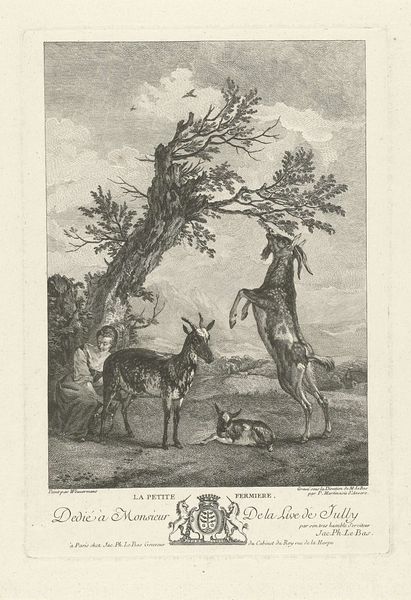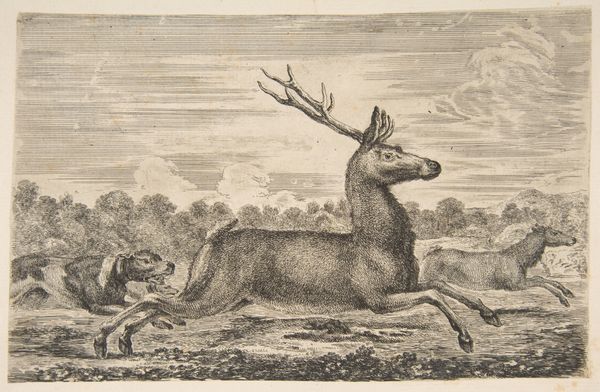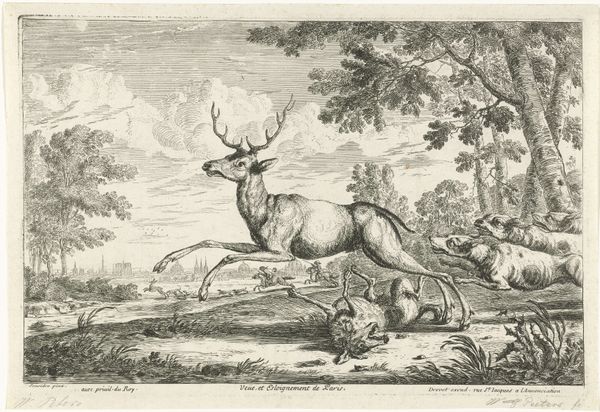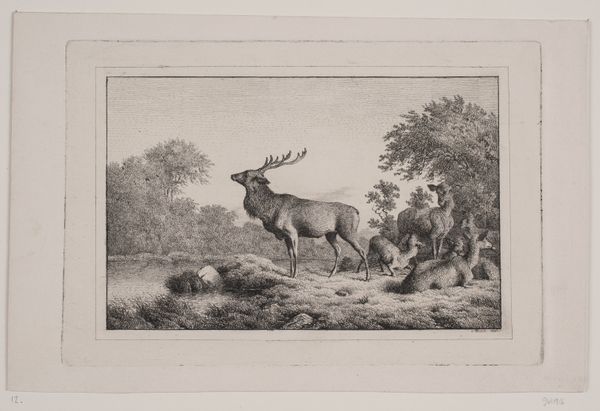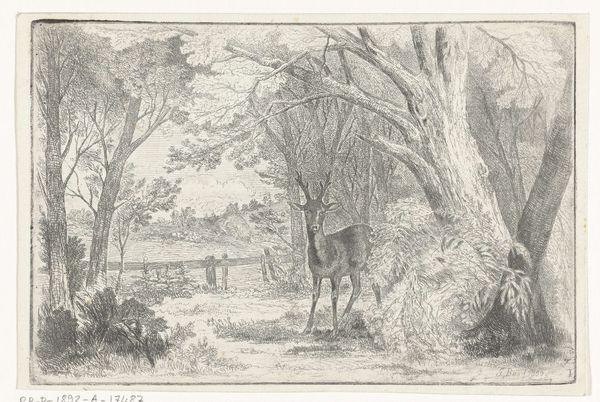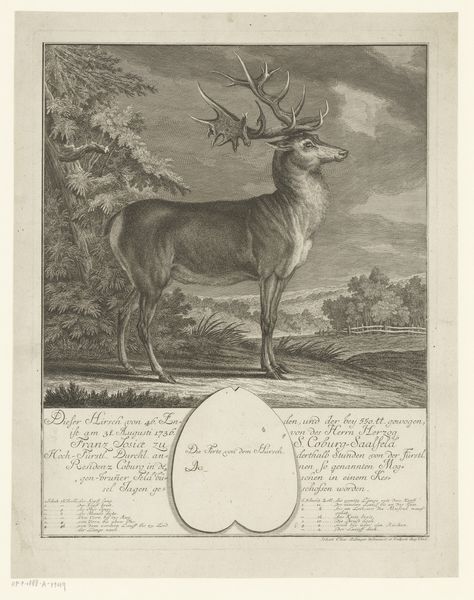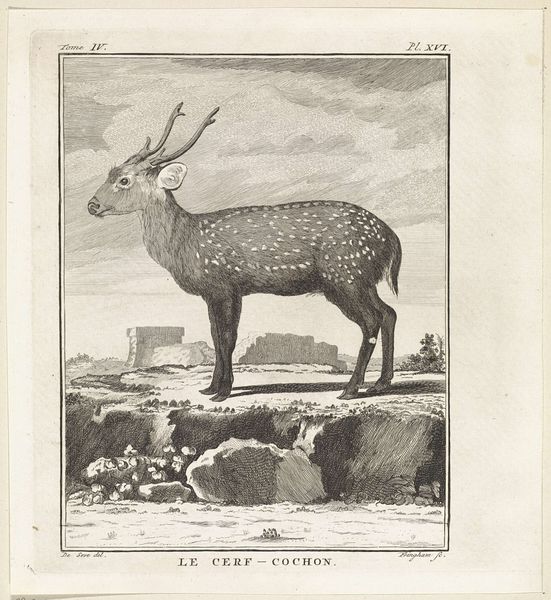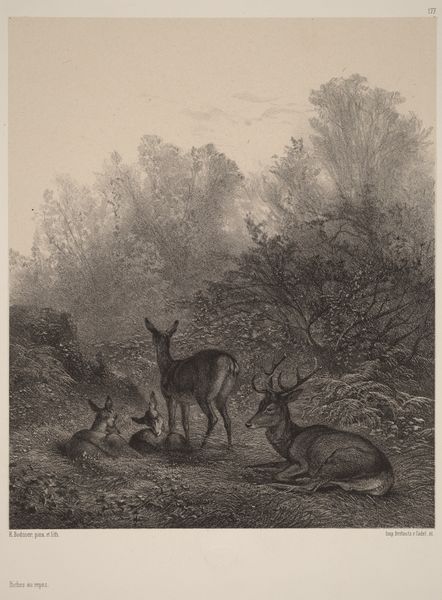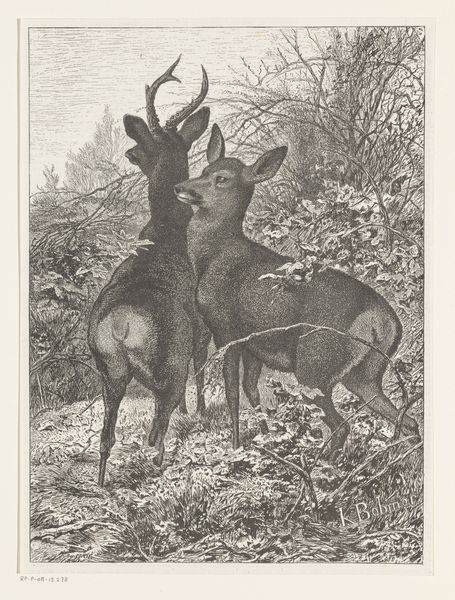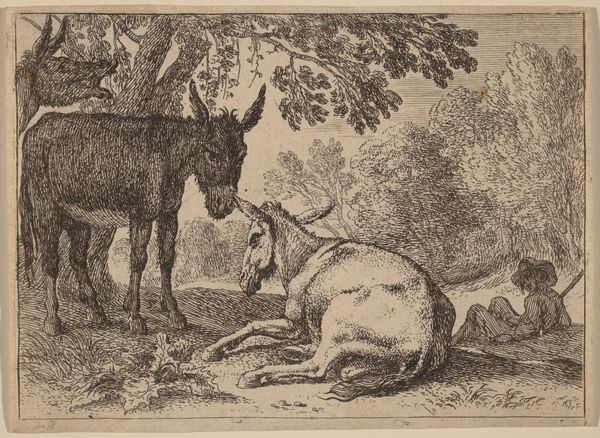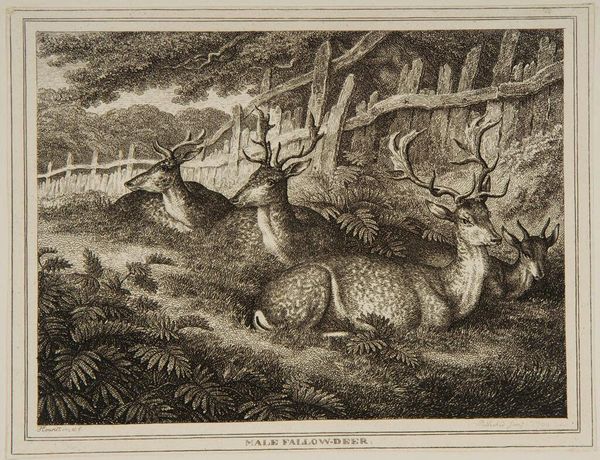
Dimensions: height 273 mm, width 188 mm
Copyright: Rijks Museum: Open Domain
Curator: Let's consider this engraving from sometime between 1739 and 1789, attributed to Pieter Franciscus Martenasie. It's titled "Hertenpark." Editor: It's… reserved, wouldn't you say? A quiet stillness permeates the image. The limited tonal range enhances that feeling; even the clouds feel somehow immobile. Curator: Interesting. As an engraving, the process involved meticulously cutting lines into a metal plate, which were then inked to produce the print. The precision and labor invested speak volumes about the status of both the patron and the artist. Notice also the social status associated with hunting rights and the curated landscapes these animals inhabit. This wasn’t just a scene from nature; it was carefully controlled. Editor: Indeed, the formality is striking. The stags themselves seem posed, almost regal in their arrangement. The sharp lines define the forms beautifully; see how the engraver has used hatching to model the bodies of the deer and suggest depth. The textures are exquisite – the velvety fur against the smooth tree bark. Curator: Exactly, and this is emphasized by its dedication to M. Vanschorel, clearly a figure of civic importance referenced here. This image probably functioned as a statement of Vanschorel's land ownership, privilege and social standing during a time when these visual statements really solidified power and promoted hierarchy. Consider how images like this propagated cultural values. Editor: A demonstration of refined taste, made explicitly visible. However, I see an elegance beyond the mere documentation of property. The composition leads the eye smoothly, from the rabbits in the foreground to the mature trees dominating the backdrop. I like the rhythmic pattern that develops there in that section. It achieves an impressive sense of harmony. Curator: Yes, that integration of the animals within the controlled landscape shows a very specific vision. What the animal consumes within that landscape becomes an extension of that hierarchy as it mirrors human power structures of the period. Editor: It seems like the artist sought to capture not only an environment, but also an ideal – a harmonious interplay between cultivated nature and aristocratic power. Thank you. Curator: A compelling reading indeed. It leaves me considering what stories are engraved into its layers.
Comments
No comments
Be the first to comment and join the conversation on the ultimate creative platform.
